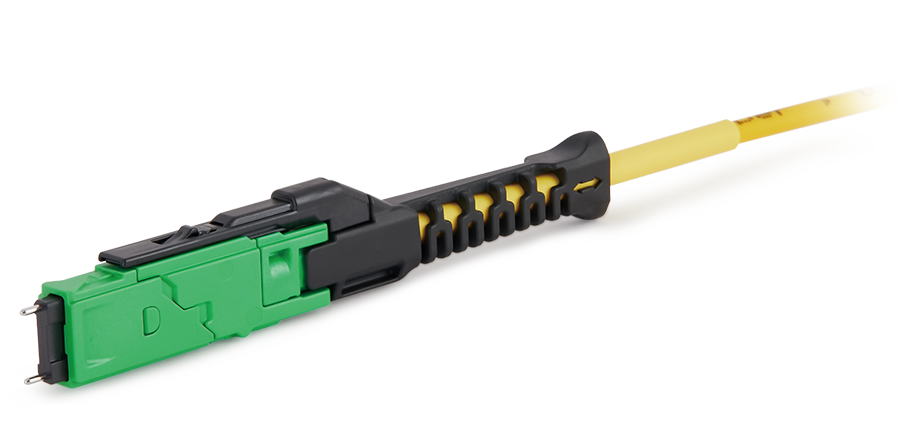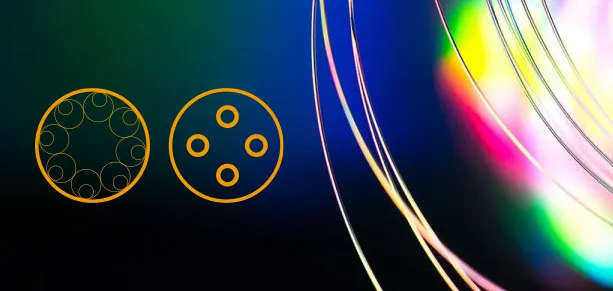The effective operation of MPO (multi-fiber push-on) connectors is crucial for maintaining high-performance fiber optic networks in data centers. This article delves into the specialized requirements of MPO connectors and outlines comprehensive guidelines for cleaning and inspection. As MPO connectors become increasingly integral to modern connectivity solutions, ensuring their cleanliness and optimal performance is paramount.
Overview of MPO Connectors
MPO connectors, or multi-fiber push-on connectors, play a vital role in interconnect facility applications, providing high-density cabling solutions. Unlike single-fiber connectors, MPO connectors utilize rectangular ferrules known as mechanical transfer (MT) ferrules, capable of accommodating multiple fibers—ranging from four to over 32 fibers per mated pair.
Cleaning Procedures
Cleaning MPO ferrule involves considerations unique to their design. While the ferrules are made of plastic, as opposed to the ceramic ferrules commonly found in single-mode and multimode connectors, the cleaning procedures remain similar. The following points highlight the key aspects of MPO connector cleaning:
Materials Compatibility
Cleaning materials such as lint-free wipes, swabs, compressed air, and isopropyl alcohol, commonly used for ceramic ferrules, are also suitable for cleaning thermoplastic MT ferrules.
Tool Compatibility
Cleaning tools and fixtures must be designed to accommodate the larger rectangular MT ferrules and their guide pins. Cartridges and pen-type cleaners with specific features for MPO connectors are widely available.
Fiber Protrusion
MPO connectors are polished to ensure fiber ends protrude between 1.0 to 4.0 µm beyond the MT ferrule's polished end face. Cleaning tools must consider this unique characteristic during the cleaning process.
Inspection Procedures
Inspecting MPO connectors involves addressing distinctive features such as larger rectangular ferrules, guide pins, and multiple fiber ends. The following insights provide a comprehensive understanding of MPO cable inspection:
Guide Pins and Holes
Special attention is required to clean and inspect guide pins and guide-pin holes, a step not necessary with cylindrical ferrules. Contaminants in guide-pin holes can adversely impact fiber-to-fiber contact, leading to insertion loss and return loss issues.
Magnification Levels
Traditional microscopes used for inspecting fiber ends might offer excessive magnification for guide-pin holes. An inexpensive 10X loupe is recommended for inspecting guide pins and holes in the field.
Factory Environment
In assembly factories, automated systems with magnifying optics ranging up to 200 or 400X, and interferometry-based systems, are employed for thorough inspection. Guide pins and holes must be checked as a separate step in the production process.
Conclusion
Rigorous cleaning and inspection procedures are essential for ensuring the optimal performance of MPO connectors, both in factory assembly production and network installation. Contaminants in guide-pin holes pose a potential risk to fiber-to-fiber contact, emphasizing the need for meticulous cleaning practices. A variety of cleaning and inspection products, ranging from handheld tools to automated systems, are available to meet the unique requirements of MPO connectors.
In summary, adherence to established cleaning and inspection protocols is crucial for guaranteeing the reliability and efficiency of MPO connectors in diverse network environments.

 Fiber Optic Flex Circuit (FOFC)
Advanced Simulation & Optimization, High Positioning Accuracy, Flexible Customization, Rigorous Reliability Testing
Fiber Optic Flex Circuit (FOFC)
Advanced Simulation & Optimization, High Positioning Accuracy, Flexible Customization, Rigorous Reliability Testing MDC Solution
US Conec's MDC connector is a Very Small Form Factor (VSFF) duplex optical connector, expertly designed for terminating single-mode and multimode fiber cables with diameters up to 2.0mm.
MDC Solution
US Conec's MDC connector is a Very Small Form Factor (VSFF) duplex optical connector, expertly designed for terminating single-mode and multimode fiber cables with diameters up to 2.0mm. MMC Solution
US Conec's Very Small Form Factor (VSFF) multi-fiber optical connector that redefines high-density connectivity with its cutting-edge TMT ferrule technology and intuitive Direct-Conec™ push-pull boot design.
MMC Solution
US Conec's Very Small Form Factor (VSFF) multi-fiber optical connector that redefines high-density connectivity with its cutting-edge TMT ferrule technology and intuitive Direct-Conec™ push-pull boot design. EN
EN
 jp
jp  fr
fr  es
es  it
it  ru
ru  pt
pt  ar
ar  el
el  nl
nl 



_and_High-Reflection_(HR)_Optical_Coatings.webp)
